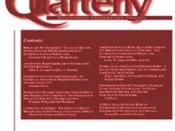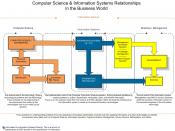A Management Information System (MIS) converts data from INTERNAL AND EXTERNAL SOURCES into information in an APPROPRIATE FORM to managers at DIFFERENT LEVELS in an organisation to enable them to make effective DECISIONS or to MONITOR/CONTROL the performance of their employees.
Information comes from internal and external sources. Internal information includes data from transaction processing. External information includes market research, intelligence gathering about the activities of competitors, information about social trends, economic factors, government legislation, and so on. This information can be obtained by "interpersonal networking", the media or by industrial espionage. In some large organisations, a whole department can exist to gather external information. An important feature of the MIS will be to put this information into a form that is useable by the managers.
The traditional information flow in an organisation is through notice boards, newsletters and memos. Technological systems include Email, Intranets, collaboration software e.g. Lotus Notes and computer databases.
The traditional functions of managers are planning, organising (resources, space and equipment), coordinating, decision making and controlling (monitoring and supervising the activities of others.
Decisions can be structured or unstructured. Structured decisions are those for which there is an established procedure to be followed e.g. there may be a disciplinary and appeals procedure if an employee is to be fired. Structured decisions are usually those that are routine and repetitive. Unstructured decisions are those that require some degree of insight and judgement. For example, "should we try to increase the number of customers who hold a store card". Unstructured decisions are often taken over a period of time and a MIS can help by providing quick high-quality information.
An MIS is not just used by managers. They can be used by anyone who needs to:
Plan
Organise
Make decisions
Forecast
Control
Co-ordinate
Strategic Information - Senior managers...



Opinions
nicely written, well laid out.
1 out of 1 people found this comment useful.